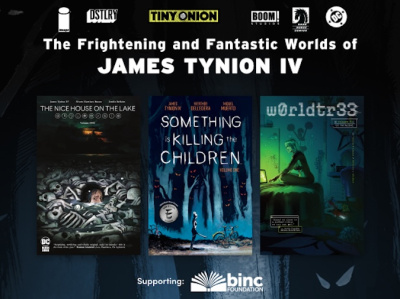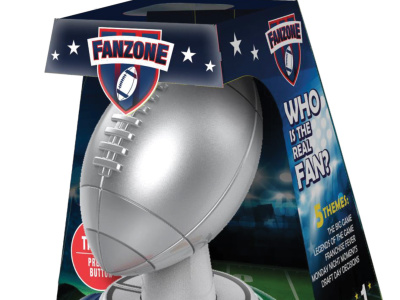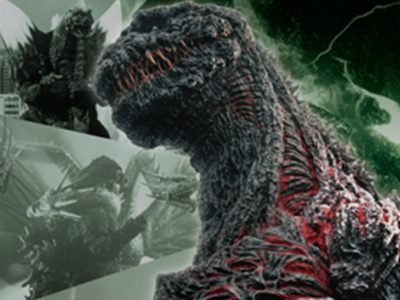ICv2: Why don’t you start off with an overview of the digital comics market from your perspective.
David Steinberger: There's some really interesting things going on for us right now. We started maybe a year and a half ago trying to increase customer choice in terms of where they wanted to go.
Three, four, five years ago, when we started, we replicated a Direct Market store. We got single issues. We got deals for single issues and not trade paperbacks. We built a store that looked a lot like the Direct Market.
Step one of expanding away from that was putting home pages on the website for manga, graphic novels, and indie; and letting people at least self‑select to home pages that maybe reflected what they were (interested in). Because in terms of selection, we have everything now, or nearly everything, including a very large manga selection. Everybody does the trades and graphic novels. So we have a big selection.
Then of course we launched last year (it's one year old) comiXology Unlimited (CU, see "ComiXology Launches Amazon Prime of Comics"), which was part of our solution on how to get into comic, meaning what we've talked about a lot in terms of the superhero comics at least, the renumbering, the re‑launching. It's very hard to understand where to start with Ms. Marvel for instance because she has three or four different number one issues at this point over the course of the last three years.
Sometimes twice in a year.
Exactly. And the events interrupt and all that type of stuff. Also, we just wanted people to have an opportunity to move beyond, for people who were already fans of one publisher or two publishers, to have a very easy way to explore all the other great content that's available.
One way to do that is say, "For 30 days for free, you can jump into this ocean of content, it's over 10,000 books now, and play, explore, decide what you want." That's been a great success.
One of the figures we've been sharing is that publishers that have been with CU for the year have seen overall double-digit growth this year. That's totally opposite to what's going on in the Direct Market.
When you say double digit growth, what do you mean by that?
Year over year GMS (Gross Merchandise Sales) top line-level growth in terms of revenue produced by comiXology branded material or comiXology plus Kindle.
What does that include?
ComiXology unlimited, a la carte, download to own, what we call a la carte, across comiXology and Kindle entirely.
Remember, we've not only done CU, comiXology Unlimited, but we've also put a nice selection of books that we know convert people into buyers into Kindle Unlimited (KU) and then another selection of books, usually the first volume of the same stuff that's in Kindle Unlimited into Prime Reading.
If you're a Prime member, there's a great selection of Marvel, Image, Valiant, Oni, all sorts of books, totally free to read as part of Prime Reading.
There's this path of "Can we identify you and help you?" For instance, Darth Vader Volume 1 is in Prime Reading. Volume 1and 2 are in KU and more in comiXology Unlimited. So you have this path to identify yourself or get into comics.
What we're seeing is we have two manga publishers that have entered our Top 10 in terms of GMS this year. That's new. It’s Kodansha and VIZ. We're seeing as our maybe Top 10, Top 20 Direct Market, as we see maybe something similar, I'm not going to give numbers but to what's going on there, we're seeing the Top 300, Top 500, Top 1,000 grow. We're seeing this kind of long tail increase. I think that's partially because of CU. It's partially because we're allowing people to self‑select into the right areas on the website.
And then this past Wednesday, we released our first personalization widget. If you browse or buy books on comiXology now and you go to the home page, you'll actually see a recommended widget that I think is really, really good.
Does that use Amazon‑type technology?
We worked in conjunction with the personalization team at Amazon to understand comiXology's data. We'll do more and more with this over the next year. This is just the beginning.
If you open up what's called a private browser, which you can do in Firefox or Chrome, which means that there's no cookies or anything so you look anonymous to us, and browse to Lumberjanes and then come back to the home page and see what happens on just Lumberjanes, it's really great. You'll see some Marvel and DC stuff in there, but you'll see it's Gotham Academy or Hellcat.
Contextually, we've been challenging ourselves for our own biases internally. We set up really nice merchandizing rules, so we always have a wide variety of leading characters, a wide variety of gender and sexual preference, and creators represented on the home page. But it's still manual, and when you have 100,000 plus books, which we do on comiXology, getting to know what attracts people from what they read and what other people have read is super powerful. I imagine eventually a page of, "You read Saga, here's some other stuff we're pretty sure you're going to love. Look at it. It's really interesting."
How long has it been since the Amazon acquisition?
Three years (see "Amazon Acquiring comiXology").
It took a while to get personalization going.
It did. What you don't know is two years ago, we released it on the detail page for a comic, where on the side, there's "people also love these series." That was our first persohnalization.
One of the joys of being a part of Amazon is the dedication to "test and learn." We went through many iterations of perfecting that because we could see when we do it this way, it goes up x percent. When we do it this way, it goes up x plus five percent in terms of people interacting with it.
This widget that's on our home page we actually tested against a home page without the widget to make sure it was effective. It takes a little bit longer but the results are better.
We gave resources to the personalization team and we worked with them directly to develop this for the comiXology customer. It's more of a expertise help than integration.
Amazon's the best at personalization for retail.
Yes, but there are certainly challenges to the (digital) comic book (format). We're new, which is also a fairly important thing. How do you get personalization to work with new stuff? It's an interesting challenge.
Of course, you've got singles and trades. We need to understand you own a single or all the singles to a trade, so we don't want to show you a trade. Lots of really weird nuances too, almost that I think, generally speaking, general retail at Amazon doesn't have to understand. Although I'm sure they understand when you've just bought a lawnmower or at least I hope they do.
That sounds like there's some great opportunities to help grow the market going forward. Why has the download-to-own market been relatively flat the last couple of years?
Without these kind of nuanced personalizations and specifically getting you to where you go, we were being affected by the same thing that drives foot traffic into a retail store. Getting excited about the biggest publishers is what drives that traffic. And honestly, we've seen really great growth on the Kindle side. I'm not sure worldwide that's the whole story.
We made no effort to estimate worldwide sales in that “flat” market size estimate.
Even in English language, we've seen real growth there. I wouldn't call this completely flat. I think that what we're seeing like I said is an expansion of the larger long tail in a lot of ways.
Click here to go to Part 2.









